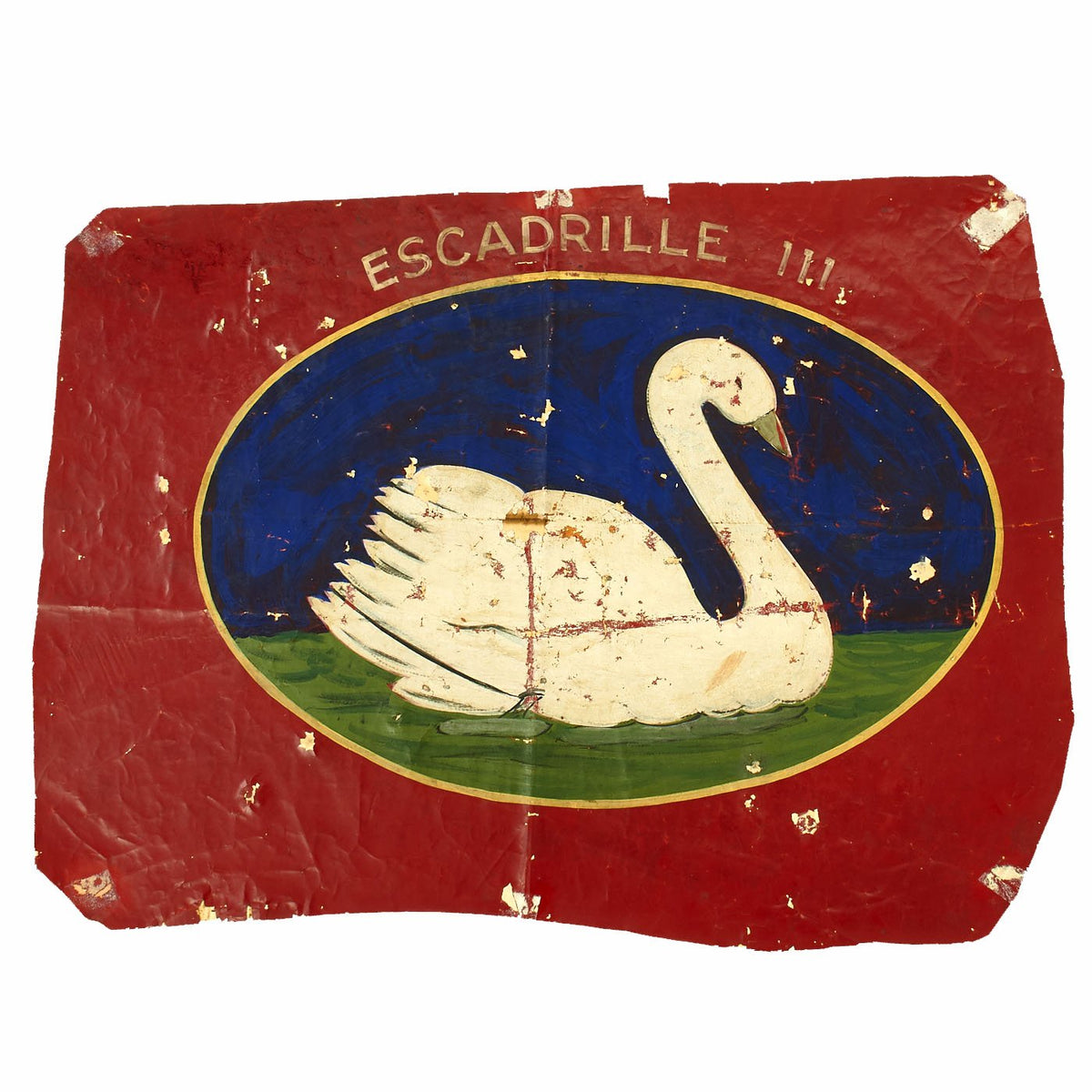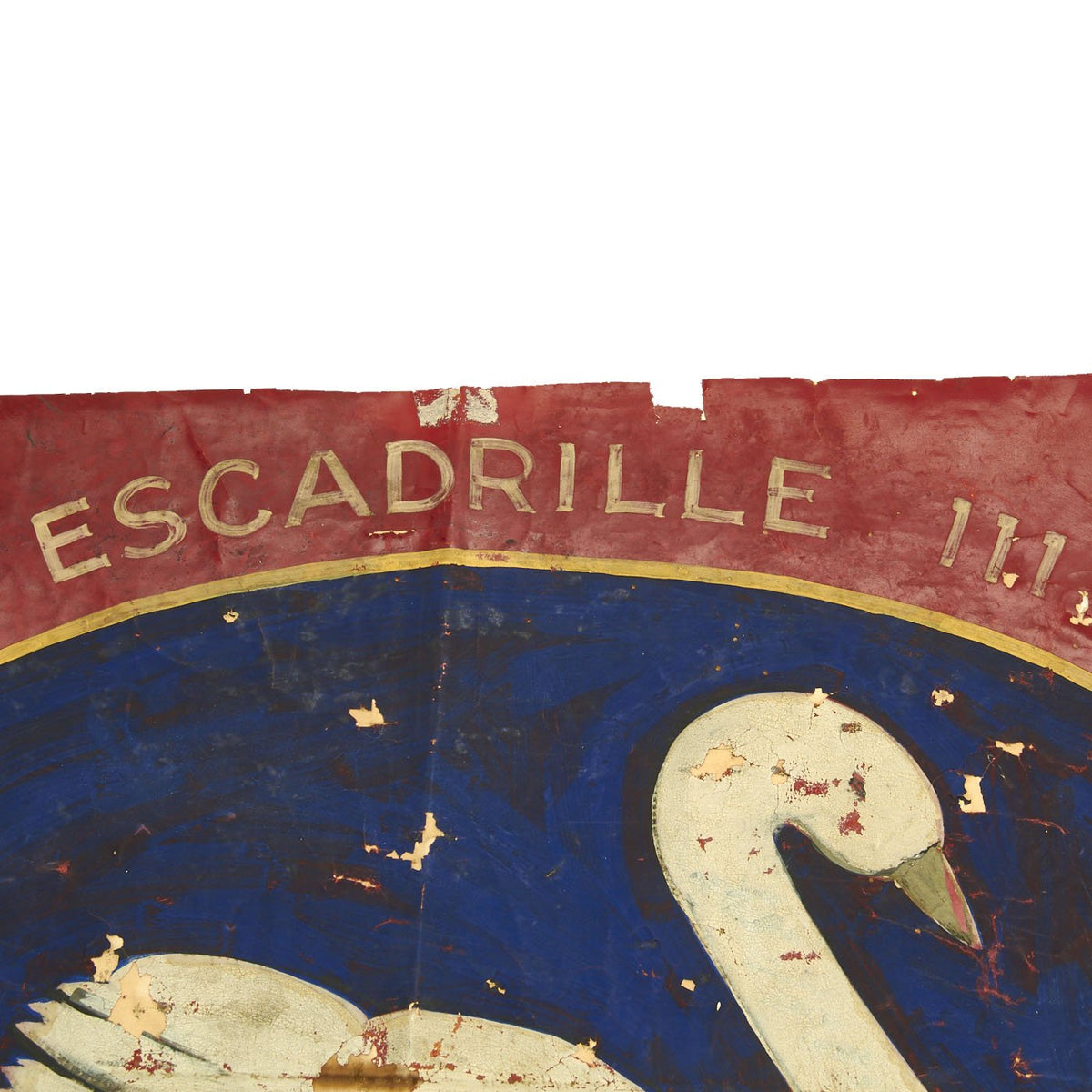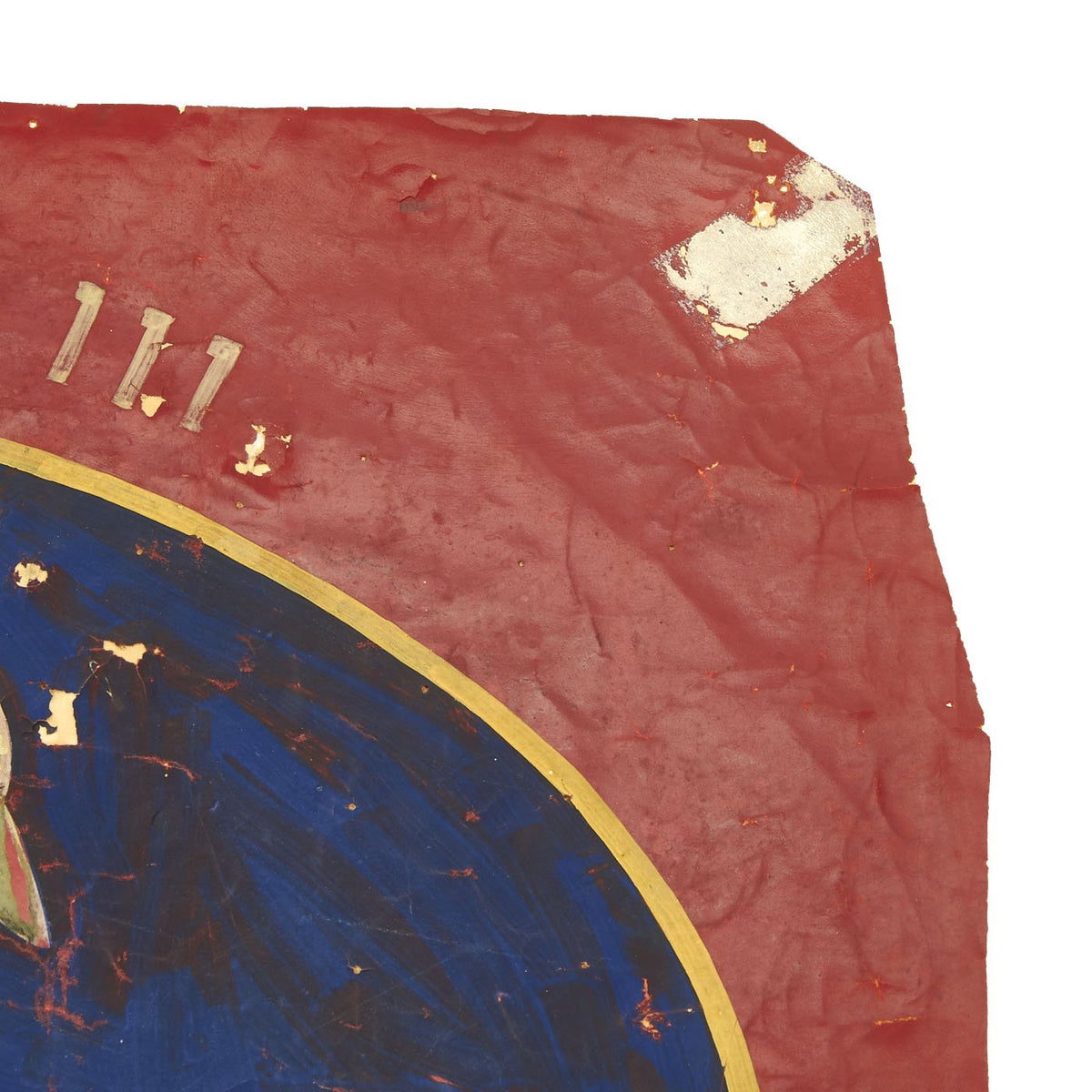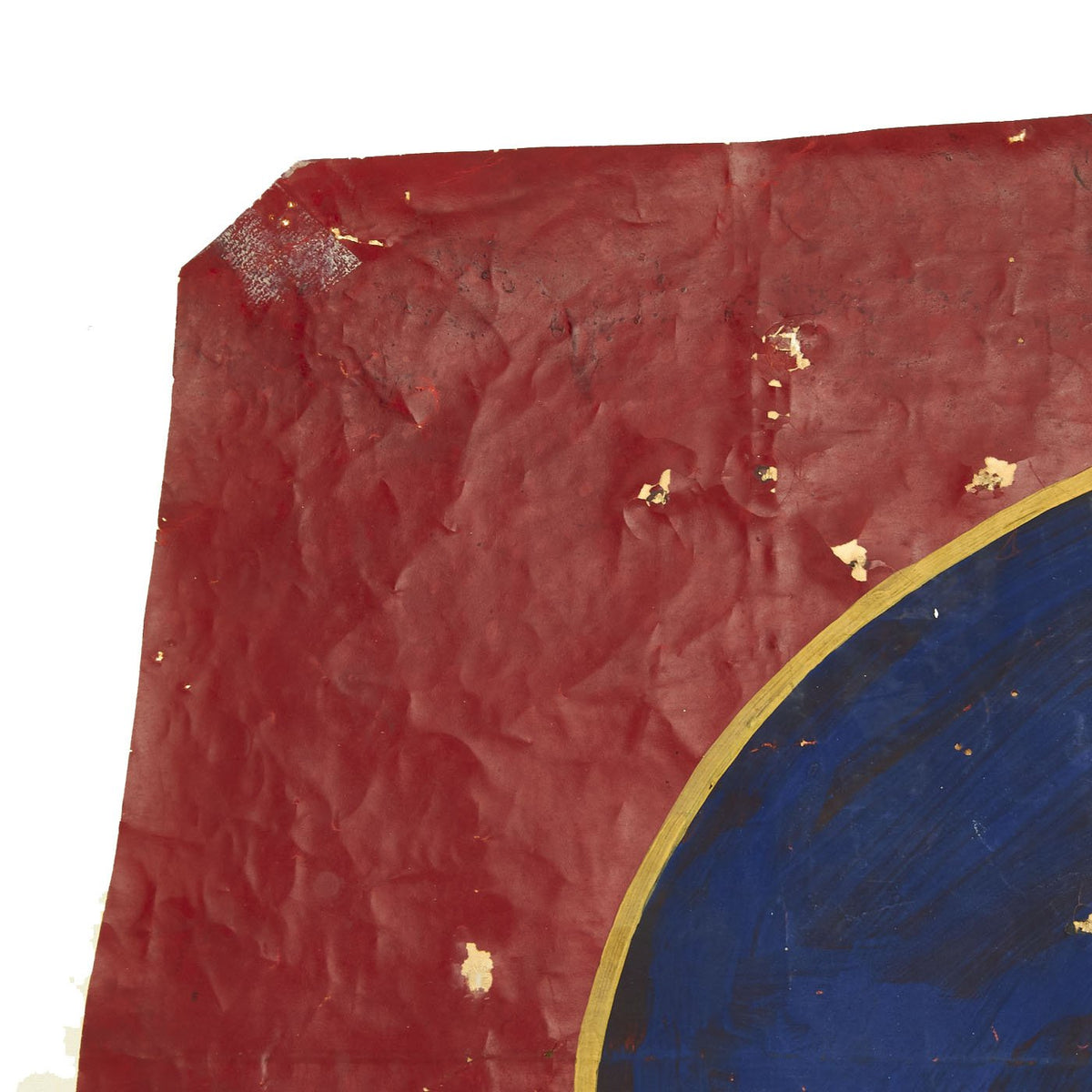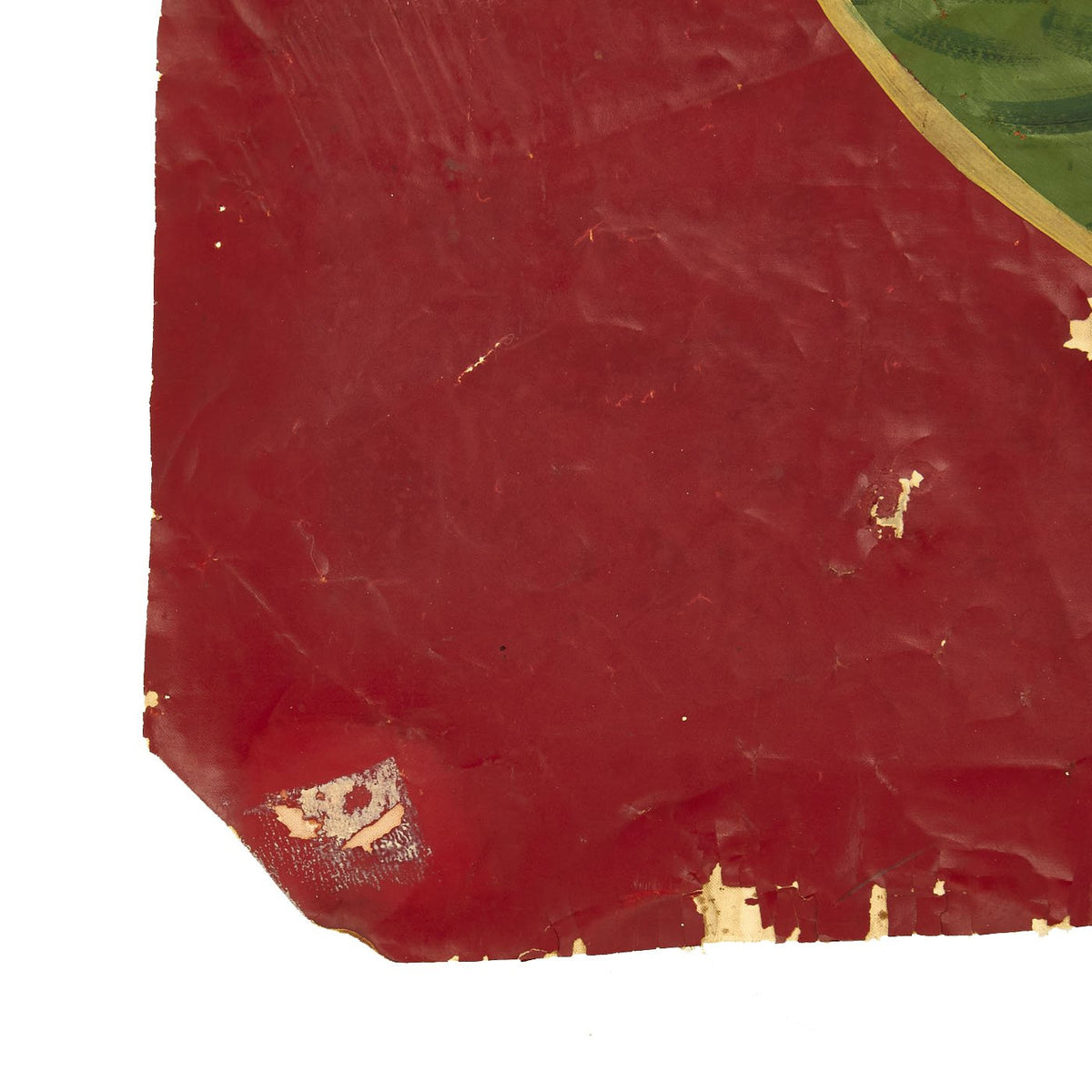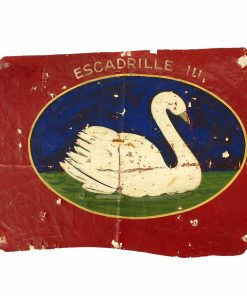Original French WWI Escadrille BR 111 Biplane Skin Painted Swan Insignia Original Items
$ 1.995,00 $ 498,75
Original Item: One-of-a-kind. Cut from the tail section of a French Great War Biplane (most likely a Nieuport 11), this is the skin or canvas fabric used to line the body of the airplane. This Swan insignia represented Escadrille BR 111 (Squadron 111) and was reportedly cut away from a crashed biplane that was shot down during the Great War. Aircraft skin section measures 27 1/2″ x 19 1/4” and is offered in very good condition.
History of French 111 Squadron
The escadrille 111 was formally established at Lyon-Bron, April 2, 1915. Placed under the command of Capt. Gaston de Serres, this unit is equipped with Voisin bombers. It takes the original denomination of VB 111.
Connected with the squadrons VB 110 (Capt. Hubert Jacquet) and VB 112 (Capt. Magnin) in to Groupe de bombardment No. 4, unit moved to the Bruay-en-Artois in 9 May 1915. Groups de bombardment 2, 3 and 4 are involved in the Battle of Artois.
On July 20, 1915 Groups de bombardment met Malzéville Plateau, near Nancy, to participate in strategic mission on the stations of Saarbrücken, Bonsdorf and the mines of Morsbronn.
In December 1915, the squadron came under the command of 3 GB and receives Voisin’s armed with 37mm canons and renamed into VC111.
In March 1916 unit is detached with the VC 109 to the 2nd Army, to be engaged in the battle of Verdun from the field of Bar-le-Duc. Then in July, the squadron was sent to the Somme to attend the Franco-British offensive.
In March 1917, the squadron is converted to Sopwith 1B1 and 1B2 and becomes a bomber unit SOP111. Assigned to 1 GB, 8 April 1917, she took part in the offensive on the Chemin des Dames, then the Woëvre and Lorraine, bombing railway stations and industrial targets in the region of Briey.
The insignia of the squadron was adopted during the command of Ltt Jean Brun (February 5, 1917 – March 29, 1918). He had participated actively in the formulation of the doctrine of employment of the V formations for the bombers units. Moreover, this offcier looking for a badge which incorporated the national colors. He chose the white swan (in flight a wedge of white swans will form as a V) on a background of red sky and a blue lake. The first aircraft of the squadron, who wore this emblem, were the Sopwith 1A2 who arrived from February 1917.
The escadrille SOP111 was recieved Breguet 14 B2’s from October 1917. Br.111.
The GB 1 is installed in Champagne since the end of 1917, in Villeneuve-les-Vertus, is profoundly altered. The day squadrons 111 and 106, will form the new GB 6.
This unit will be integrated into the l’escadre de bombardement n° 12, along with GB 9 and GB5 and placed under the command of Maj. Vuillemin, February 20, 1918.
In a l’escadre de bombardement n° 12 Br.111 conducted many successful missions for the exploration, photography and bombing in various parts of the front.
At the end of the war, the crews of BR 111 have 15 confirmed victories and had losses
17 killed in combat or by accident, 7 injured and 7 prisoners.
After the war, the squadron BR 111 became the 2nd Squadron of the 2nd Aviation Regiment observation Dijon-Longvic, 1 January 1920. 1 August 1920, following a further reorganization within the Air Force, he became the second squadron of the 32nd RAO, still stationed in Dijon. From 1 October 1932, he became the second squadron of GR I/52 first to Dijon, then from 1 April 1937, Nancy-Essey. It is within this unit, it participates in the Second World War. GR I/52 is dissolved, December 31, 1942.
Fast Shipping with Professional Packaging
Thanks to our longstanding association with UPS FedEx DHL, and other major international carriers, we are able to provide a range of shipping options. Our warehouse staff is expertly trained and will wrap your products according to our exact and precise specifications. Prior to shipping, your goods will be thoroughly examined and securely secured. We ship to thousands clients each day across multiple countries. This shows how we're dedicated to be the largest retailer on the internet. Warehouses and distribution centres can be located throughout Europe as well as the USA.
Note: Orders with more than one item will be assigned a processing date depending on the item.
Before shipping before shipping, we'll conduct a thorough inspection of the items you have ordered. Today, the majority of orders will be delivered within 48 hours. The delivery time will be between 3-7 days.
Returns
The stock is dynamic and we cannot completely manage it because multiple stakeholders are involved, including our factory and warehouse. So the actual stock may alter at any time. It's possible that you may not receive your order once the order has been made.
Our policy is valid for a period of 30 days. If you don't receive the product within 30 days, we are not able to issue a refund or an exchange.
You can only return an item if it is unused and in the same state as the day you received it. You must have the item in its original packaging.
Related products
Uncategorized
Uncategorized
Uncategorized
Uncategorized
Uncategorized
Angolan Rebel 1970s era 60mm Inert Display Mortar from Angolan Civil War Original Items
Uncategorized
Australian WWII Owen MK1 Machine Carbine SMG Custom Fabricated Replica with Sling Original Items
Uncategorized
Uncategorized
Uncategorized
Uncategorized
Uncategorized
Uncategorized
Armoured Fighting Vehicles of the World: AFVs of World War One (Hardcover Book) New Made Items
Uncategorized
Uncategorized
Uncategorized
Uncategorized
Uncategorized
Uncategorized
Uncategorized
Uncategorized
